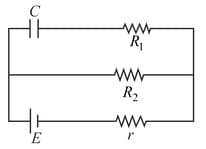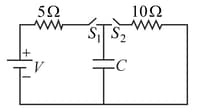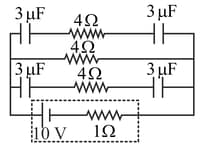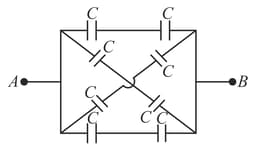A parallel plate capacitor is charged and then isolated. On increasing the plate separation









Important Questions on Capacitance
A parallel plate capacitor is charged and the charging battery is then disconnected. The plates of the capacitor are now moved, farther apart. The following things happen.
The magnitude of charge in steady state on either of the plates of condenser in the adjoining circuit is

The plate separation in a parallel plate condenser is and plate area is . If it is charged to volt & battery is disconnected then the work done in increasing the plate separation to will be
In the adjoining diagram, (assuming the battery to be ideal) the condenser will be charged to potential if

A parallel plate condenser of capacity is connected to a battery and is charged to potential . Another condenser of capacity is connected to another battery and is charged to potential The charging batteries are removed and now the condensers are connected in such a way that the positive plate of
one is connected to negative plate of another. The final energy of this system is
In the following figure, the charge on each condenser in the steady state will be

In the adjoining circuit, the capacity between the points and will be

